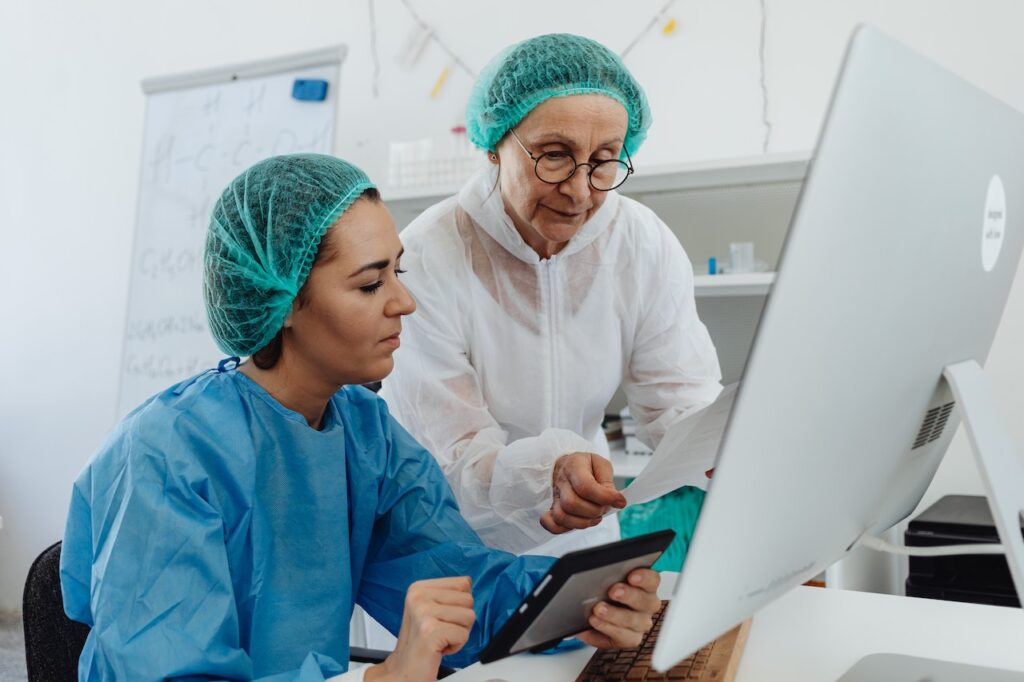
AI may lead to a whole new approach to diagnosing patients by analyzing their genetic information rather than relying on the traditional or largely still subjective diagnosis based on cells’ appearance under a microscope.
Breast Cancer Diagnosis: A Computer Science Perspective
Breast cancer is the most common type of cancer in women and the second leading cause of death from cancer overall. Early detection is critical to successful treatment and survival, but current breast cancer screening methods have several limitations. They can be expensive, invasive, and cause anxiety and false alarms.
Computer science is changing the way cancer is diagnosed by developing new ways to screen for breast cancer that are cheaper, less invasive, and more accurate. For example, machine learning algorithms can be used to analyze mammograms and identify early signs of breast cancer. Research is also being conducted on using 6DoF trackers to capture 3D images of breasts that can be analyzed for abnormalities.
These new methods of screening for breast cancer have the potential to save lives by detecting the disease at an earlier stage when it is more treatable. They also have the potential to reduce the cost of healthcare by reducing the need for expensive and invasive diagnostic procedures especially Cancer treatment in India.
Future of Surgery in Oncology
In surgery, computers are becoming increasingly important in both planning and execution. In oncology specifically, computer-assisted surgery is being investigated as a way to improve accuracy and safety.
There are many potential applications of computer science in oncology surgery. One is preoperative planning, where surgeons can use 3D modeling to better understand the tumor and surrounding tissues. This can help them plan the best approach for removal without damaging healthy tissue.
During the procedure itself, computers can be used to guide surgical instruments. This can help with things like ensuring that all of the cancerous tissue is removed while minimizing damage to healthy tissue. Real-time imaging can also be used to give surgeons a better view of the body and identify any areas that may need additional attention.
After surgery, computers can be used to monitor patients for signs of cancer recurrence. By analyzing data from multiple sources, including medical images and patient surveys, it may be possible to identify small changes that could indicate a return of cancer. This information could then be used to tailor follow-up care and improve outcomes.
Overall, computer science has the potential to greatly improve the field of oncologic surgery. By helping with things like preoperative planning, real-time guidance during procedures, and postoperative monitoring, computers could make surgery safer and more effective for everyone involved.
How Computer Science Can Improve Survival Rates in Cancer
Cancer is one of the leading causes of death worldwide, and computer science is playing an increasingly important role in improving survival rates.
In the past, cancer was treated largely based on trial and error, with doctors making decisions based on their best guesses of what would work. However, computer science is providing new tools that are changing the way cancer is treated.
One example is machine learning, which is being used to develop more accurate models of how cancer grows and spreads. This information can then be used to design more effective treatment plans.
Computer science is also providing new ways to screen for cancer. For example, algorithms are being developed that can analyze images of tissue to look for early signs of cancer. These methods may eventually be able to identify cancer before it even develops symptoms, which could dramatically improve survival rates.
In addition, computer science is helping to make treatments more personalized. By analyzing a patient’s DNA, doctors can now tailor treatments specifically to their individual needs. This has the potential to greatly improve outcomes by ensuring that patients receive the most effective possible care.
As computer science continues to evolve, it will become increasingly important in the fight against cancer. With its help, we may eventually be able to dramatically reduce the number of lives lost to this disease.
Preventative Screening: Errors and Comparisons to Traditional Medical Screening Tools
Preventative screening for cancer is becoming more and more common as the technology to screen for DNA mutations that may predispose an individual to cancer becomes more accessible and affordable. However, there are still some errors that can occur with this type of screening, which is why it is important to compare it to traditional medical screening tools.
One of the main errors that can occur with preventative cancer screening is a false positive result. This means that the test indicates that you have a mutation that could lead to cancer when in reality, you do not have this mutation. False positive results can be very upsetting and cause unnecessary worry.
Another error that can occur is a false negative result. This means that the test indicates that you do not have a mutation that could lead to cancer, when in reality, you actually do have this mutation. False negatives can be just as worrying as false positives, as they could mean that you are not taking steps to prevent a potentially life-threatening disease.
Overall, preventative cancer screening is a valuable tool, but it is important to be aware of the potential errors that can occur. If you are considering this type of screening, be sure to talk to your doctor about the risks and benefits so that you can make an informed decision.